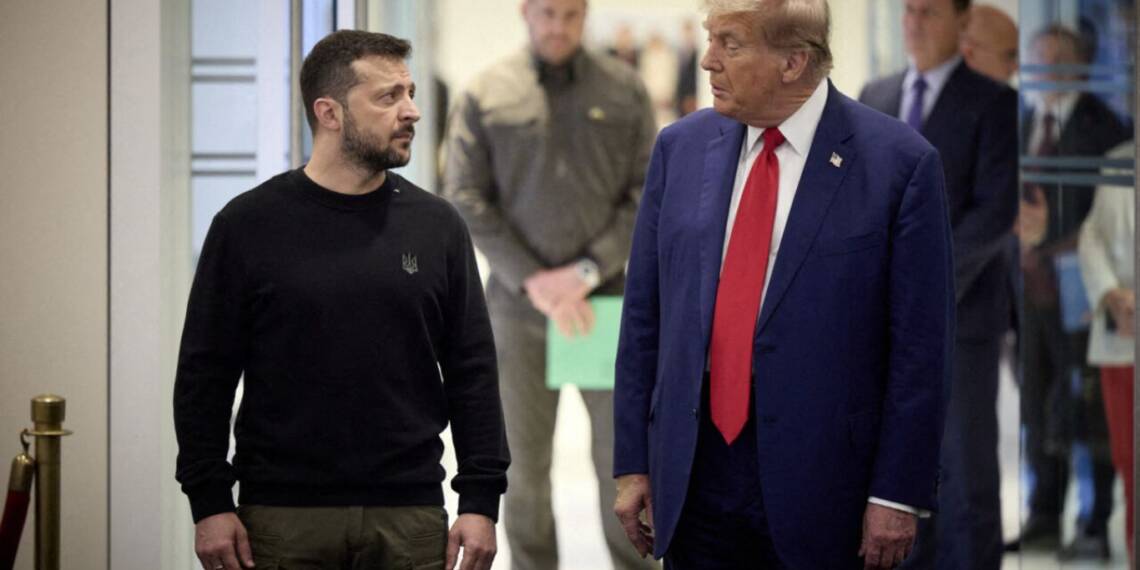The dynamics on the Ukrainian battlefield are shifting rapidly—and the Trump administration is racing to close the gaps in America’s war strategy. When President Trump returned to office, he came with a clear goal: to broker a lasting peace in Ukraine.
But Ukrainian President—pardon, dictator—Volodymyr Zelensky has remained defiant, rejecting any compromise. Kyiv insists that Russian forces must fully withdraw before peace can be considered. Trump, however, stands firmly against this demand.
And now, ladies and gentlemen, the latest move on Trump’s desk is enough to send shockwaves through Ukraine’s leadership. For the first time since the Cold War, we could be witnessing the division of a major city: Kyiv may soon become the next Berlin.
Kyiv is the new Berlin
According to media reports, Keith Kellogg, a top adviser to Donald Trump and his envoy for the Ukraine conflict, believes Ukraine could be divided in a manner similar to Berlin after the Second World War.
In an interview with The Times, Kellogg suggested a peace plan that would involve splitting Ukraine into zones controlled by different powers. Under the proposal, British and French forces could oversee western Ukraine, while Russian troops would remain in the eastern areas currently under their control.
“You could almost make it look like what happened with Berlin after World War Two,” Kellogg said. “You had a Russian zone, a French zone, a British zone, and a US zone.” He clarified that the United States would not send ground troops under this plan.
The idea implies Ukraine would have to give up its eastern territories, something President Volodymyr Zelensky has repeatedly rejected. Zelensky has made it clear that Ukraine will never recognize areas under Russian occupation as Russian land. “Our territories and our values are not for sale,” he said in March.
Russia, meanwhile, has firmly opposed any NATO military presence in Ukraine, and former President Trump’s team has also expressed reluctance toward Ukrainian NATO membership.
Kellogg, a retired lieutenant general, also proposed creating an 18-mile buffer zone, or demilitarised zone (DMZ), along the current front lines. “You look at a map and you create, for lack of a better term, a demilitarised zone,” he said, suggesting both sides pull back 15 kilometres each. He admitted violations were likely but claimed the zone would be easy to monitor.
He also said the Dnipro River — which runs through Kyiv and divides the country — could serve as a natural boundary between the east and west zones. British and French troops, he proposed, would be stationed west of the river to help stabilise the area.
Advice for Europe
UK Prime Minister Keir Starmer and French President Emmanuel Macron have reportedly expressed willingness to send peacekeeping forces to Ukraine to deter future Russian aggression.
However, Kellogg warned that the European powers should not count on Trump’s full support for their efforts, urging them to “plan for the worst case.”
While Kellogg argued his plan would not provoke Russia, Kremlin officials have previously insisted that foreign NATO troops would not be allowed on Ukrainian soil under any circumstances.
Meanwhile, Trump envoy Steve Witkoff met Russian President Vladimir Putin in St Petersburg on Friday to discuss a potential ceasefire. The Kremlin described their four-hour meeting as constructive, though no breakthroughs were reported.
That same day, President Trump urged Russia to stop its attacks, saying on social media, “Russia has to get moving. Too many people are dying in a terrible and senseless war.”
Backdoor Talks Continue
So, it’s clear that a backchannel between Washington and Moscow remains active, quietly shaping the next phase of this war. But what’s unfolding is deeply unsettling for Ukraine’s leadership. Trump’s push for a demilitarised zone signals a shift away from endless war, but it also hints at a future where Ukraine may be forced to concede ground.
The question now is not just whether such a plan can work but at what cost. With tensions running high and trust running low, one thing is sure: the road to peace is not at all smooth. It is quite rocky….. Whether it succeeds, only time will tell.








